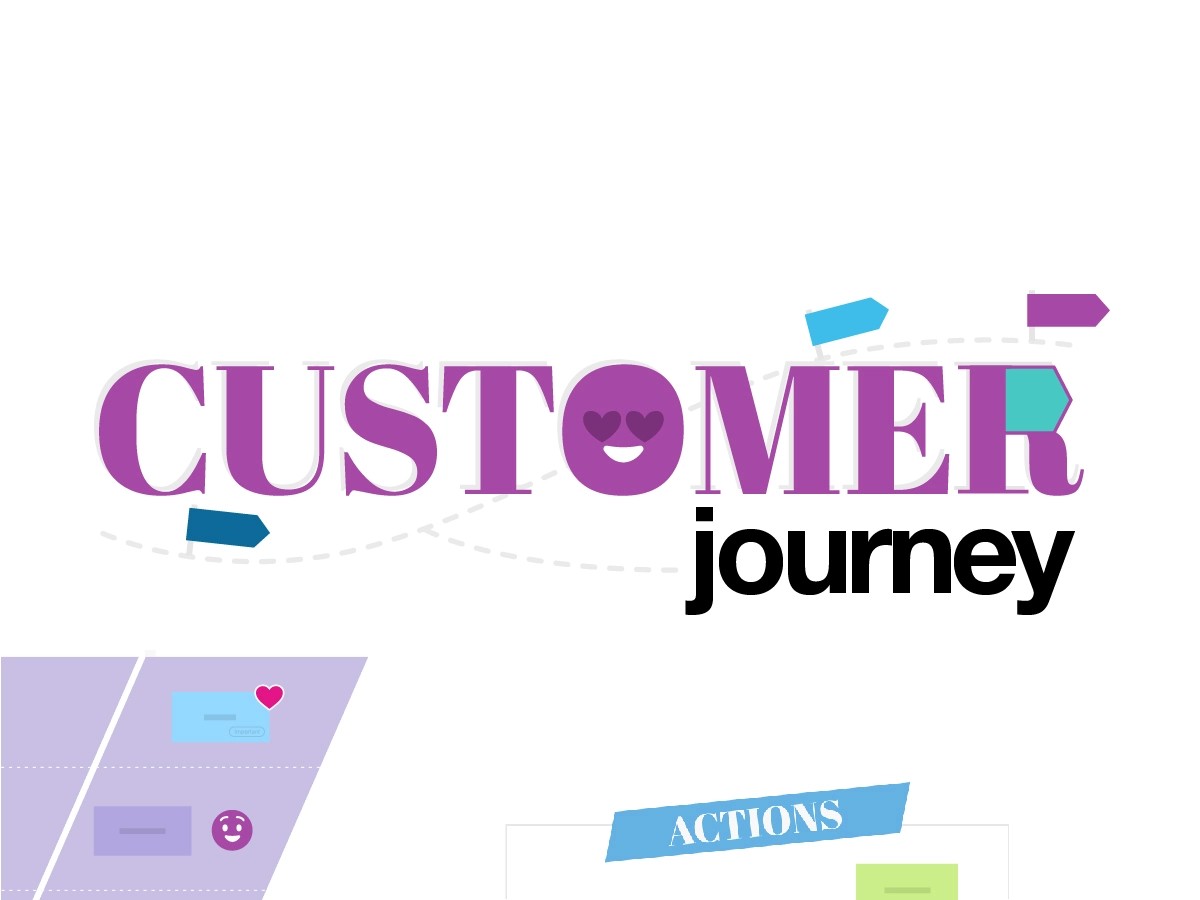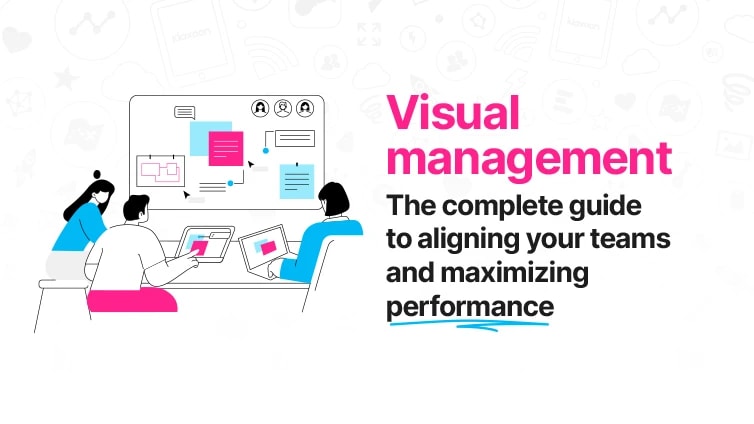5 visual collaboration techniques to build your customer journey
Executive summary:
In an era of increasingly complex customer journeys, visual collaboration has become an essential tool for marketing teams seeking clarity, efficiency, and agility.
By structuring exchanges around visual formats and interactive activities, it becomes easier to align expertise, quickly identify points of friction, and transform ideas into concrete actions at every stage of the customer journey: discovery, consideration, purchase, onboarding, loyalty, etc.
This article shares five advanced techniques for managing and optimizing your customer journey through visual collaboration:
- Map the customer journey as a team: Visually represent each stage, from discovery to loyalty, to visualize all your interactions, identify friction points, and promote stakeholder alignment.
- Effectively prioritize optimization actions: Use a visual workspace to generate ideas for actions, rank them, and vote to focus your efforts on the actions with the greatest impact.
- Collect feedback in real time and asynchronously: Integrate surveys and feedback tools into your workshops or meetings to validate assumptions, test messages, and engage all employees, even remotely.
- Simulate customer scenarios interactively: Organize role-playing exercises and simulations to anticipate customer reactions, identify obstacles, and adjust your journeys before implementation.
- Visualize KPIs with collaborative dashboards: Centralize and share key performance indicators on visual dashboards to track the evolution of the customer journey, engage your teams, and adjust your actions in real time.

With this ready-to-use template, create a unique and customized customer journey as a team.

For marketing teams, managing the customer journey presents many challenges today. The proliferation of channels, rapidly changing expectations, and the need to coordinate diverse expertise all contribute to making the customer experience more complex than ever before.
In this context, visual collaboration (or visual management) is becoming an essential lever for gaining efficiency and agility. Teams that adopt working methods based on the use of visual formats (images, graphics, drawings, etc.) to structure their exchanges gain clarity in their processes, as well as increased engagement and interactivity.
When it comes to the customer journey, visual collaboration is also an unrivalled solution for effectively identifying friction points, prioritizing actions, and accelerating decision-making, all while collaborating across departments as needed. What's more, it enables you to turn ideas into concrete actions, while being confident that you are providing the most relevant response to the needs expressed by your customers or prospects at every stage of their journey with your company.
How can you go beyond traditional approaches and take full advantage of visual collaboration? In this article, discover five innovative techniques to enable your marketing teams to manage each stage of the customer journey more effectively.
1. Map the customer journey as a team
Visual mapping of the customer journey is an essential starting point for any optimization effort.
By graphically representing each stage, from discovery to loyalty, marketing teams can visualize all interactions with their prospects and customers and more easily identify friction points or opportunities for improvement.
Working as a team on visual mapping also allows you to combine expertise from different areas, such as marketing, sales, support, and product. This collaborative approach promotes alignment among stakeholders and reveals gray areas that would go unnoticed with a more traditional format.
Let's take an example: when launching a new digital service, a marketing team maps the customer journey on a shared Klaxoon Board. They quickly identify a friction point during onboarding: the registration process is too complex.
This collective awareness then allows them to prioritize improvement actions and align teams on the solution to be implemented (which we will explore in more detail in the next section).
To build an effective customer journey map, we recommend using a digital whiteboard. Bring together the key members of your team (or other teams if necessary) and define the main stages of the customer journey:
- Awareness
- Consideration
- Purchase
- Onboarding
- Retention, etc.
For each stage, identify the personas involved, the touchpoints (website, social media, email, etc.), and the associated expectations or emotions.
In addition, by enriching your map with visual elements, you will gain greater clarity and readability:
- Color codes to categorize points of friction or satisfaction;
- Connections between stages;
- Images and icons;
- Customized templates, etc.
2. Effectively prioritize optimization actions
Once you have identified the friction points in your customer journey, you now need to define the internal actions to be taken to eliminate them. Faced with a multitude of ideas for improvement, you need to collectively determine which ones will have the greatest impact so that you can focus your efforts where they will be most effective.
Once again, visual collaboration provides an ideal framework for this step. By bringing the team together in your online visual workspace, everyone can contribute their optimization ideas, vote to rank them in real time, and reveal the best ideas from the group.
This approach encourages everyone to express themselves and allows innovative solutions to emerge, while avoiding individual biases.
Let's continue with our example of launching a new digital service. After mapping the customer journey, the marketing team identifies that the onboarding stage is problematic. During a collaborative workshop, each member suggests areas for improvement:
- Simplify the onboarding form
- Create an interactive tutorial
- Provide personalized support, etc.
The team organizes a dot-voting session to identify the best ideas by distributing tokens. In the end, the idea of redesigning the onboarding form receives the most tokens, and the team decides to focus its efforts on this aspect, which is considered more urgent and impactful.
Here is how to apply this methodology in your own context:
- Start with an ideation session where each participant shares their suggestions for improvement, for example in the form of virtual sticky notes.
- Next, group the ideas by theme or by stage of the customer journey. If your tool has built-in voting features, use them to allow everyone to flag the actions they think are most important.
This collective selection process ensures that the decisions made are shared and accepted by the entire team.
3. Collect feedback in real time and asynchronously
Another key challenge in customer journey management is knowing how to quickly and effectively collect feedback from the teams involved on specific aspects:
- A new step to validate
- A message to test
- A hypothesis to confirm, etc.
The more accessible and immediate this feedback is, the more you can adjust your actions in real time and engage all employees in the continuous improvement process.
Visual collaboration greatly facilitates this feedback gathering, whether in real time during workshops or meetings, or asynchronously to fit everyone's schedules.
In our example, when testing a new email message, our marketing team would like to validate the headline and visuals with their colleagues. To do this, they can use the Survey tool integrated into their Board to gather opinions from all the contributors, whether in a meeting or later.
This way, the results are immediately visible and usable to adjust the message before it is sent out.
In addition, employees have access to a Survey template specifically designed for effective feedback collection, which saves them time when creating their own Surveys. They can simply start from the template and quickly adjust it to their own context by adding the elements to be validated.
This means that every member of the team can share their point of view, vote, or comment at any time and from anywhere. This approach encourages everyone to participate, including those who might not necessarily speak up in person, and also enables more informed and shared decisions to be made.
4. Simulate customer scenarios interactively
To anticipate customer reactions and improve their experience, there's nothing like putting yourself in their shoes with real-life scenario simulations.
This allows internal employees to identify potential friction points, and test different solutions before implementing them. By replicating real-life situations, marketing, support, and product teams can refine their understanding of the customer journey and proactively adjust their actions.
This process naturally incorporates visual collaboration, particularly through interactive activities combined with integrated videoconferencing tools. Organizing role-playing games or online simulation workshops makes it easy to bring stakeholders together, even remotely, and stimulate discussion.
For example, imagine a company that wants to optimize its after-sales service journey. It organizes a videoconference simulation, where some employees play the role of customers and others play the role of support staff. This immersion allows the company to identify a lack of clarity in post-complaint communication and quickly initiate corrective actions.
The methodology is simple:
- Start by defining the scenario to be simulated (after-sales service process, onboarding, complaint, etc.).
- Assign each participant a specific role, then run the simulation under real conditions.
- At the end of the exercise, organize a group debriefing to gather impressions, identify any friction points encountered, and list areas for improvement.
In addition, a visual collaboration platform such as Klaxoon also includes interactive and gamified activities that can be combined with videoconferencing to set up your customer scenarios:
- A Memo to record each role in your collaborative workspace;
- A Quiz to test your team's knowledge of customer needs;
- An Adventure to challenge your team on several levels in an immersive way, etc.
5. Visualize customer journey KPIs with collaborative dashboards
The ability to manage the customer journey also depends largely on the visibility of key performance indicators (or KPIs).
However, it is not uncommon for data to remain siloed in different tools or shared on an ad hoc basis, which limits teams' responsiveness. This is where visual collaborative tracking tables can be a valuable solution: they allow you to centralize, visualize, and share all essential KPIs in real time, from conversion rates to customer satisfaction.
A visual dashboard is an efficiency lever that provides a clear and dynamic representation of the customer journey, accessible to all team members:
- On an online whiteboard such as Board, you can integrate graphs, gauges, timelines, and heat maps to make the data more meaningful.
- To take things further, workflow management platforms such as Wrike allow you to create customizable dashboards on several levels, ensuring comprehensive, visual monitoring of the different stages of your customer journey.
Now, let's consider a marketing team that wants to track the conversion rate of its product from discovery to purchase. Thanks to a shared visual dashboard, participants can immediately see where things are falling short or progressing, comment on the results, and collectively decide on adjustments to be made in a reactive manner.
Finally, the value of a collaborative dashboard also lies in its ability to engage all stakeholders: everyone can suggest areas for improvement, share their analyses, or propose new indicators to track. It is a living tool that supports the team in its efforts to optimize and manage the customer journey, day after day.
Conclusion
Visual collaboration is now a major asset for managing and optimizing the customer journey. By facilitating co-construction, prioritization, feedback collection, scenario simulation, and KPI visualization, these techniques enable marketing teams to gain clarity, efficiency, and alignment.
Now it's up to you to test these approaches on visual collaboration platforms to transform your internal processes and strengthen your teams' commitment! More than just a tool, visual collaboration is a real lever for continuous innovation, enabling you to offer your customers an increasingly seamless and differentiated experience.

Learn how to harness the full potential of asynchronous work to maximize performance and team engagement.

Unlock your teamwork potential
For free, make your first steps to top-tier work efficiency with the Klaxoon Work Collaboration Platform.
